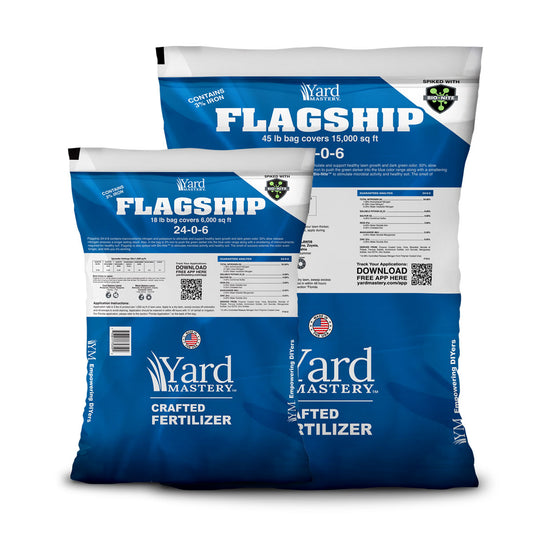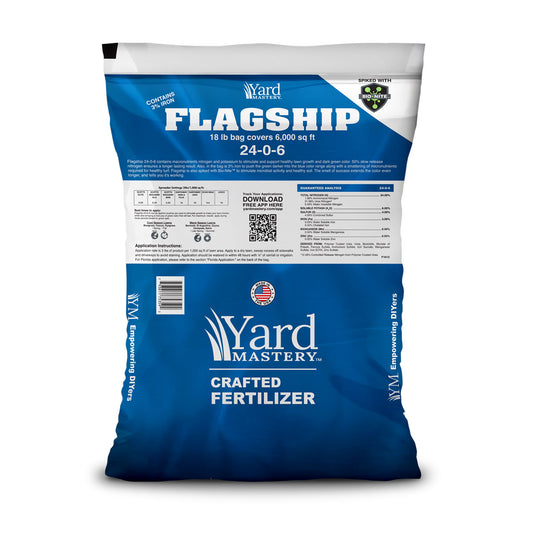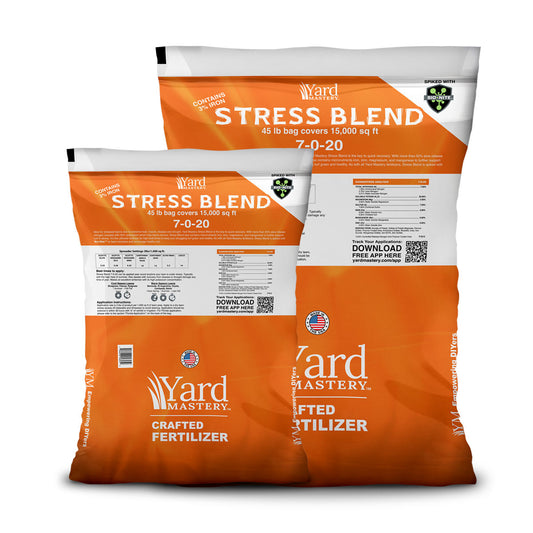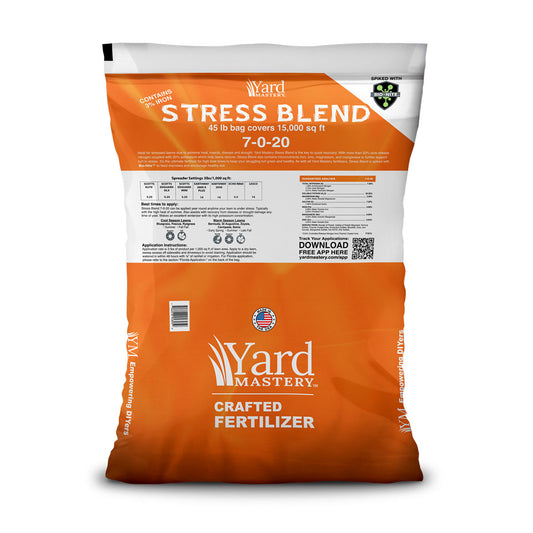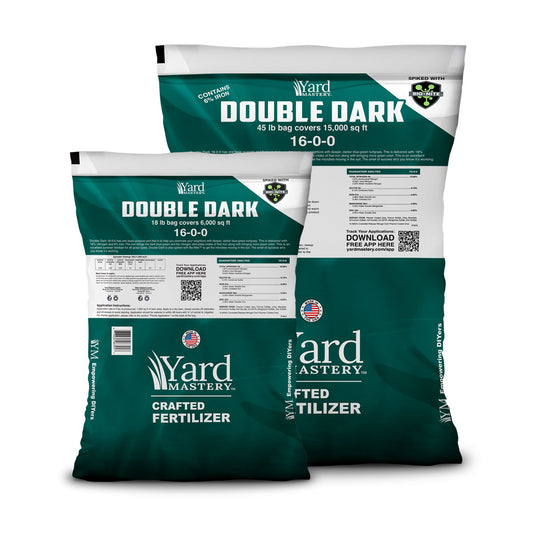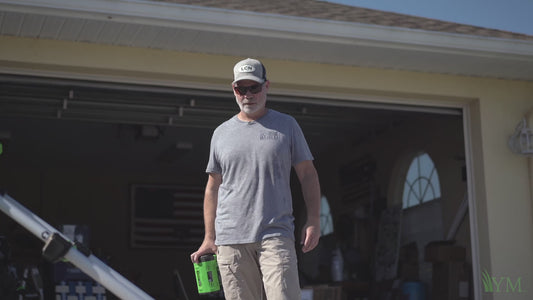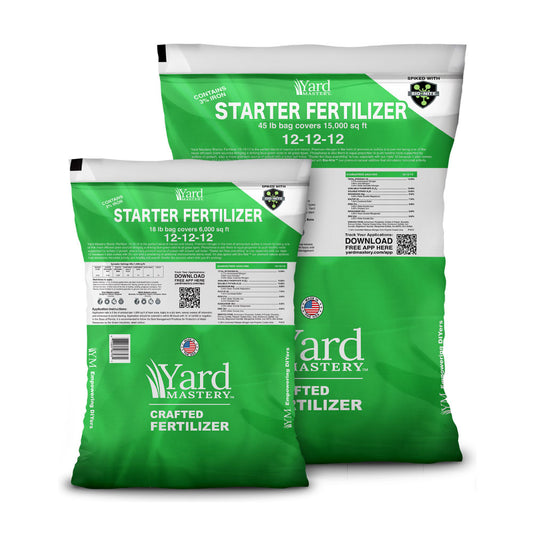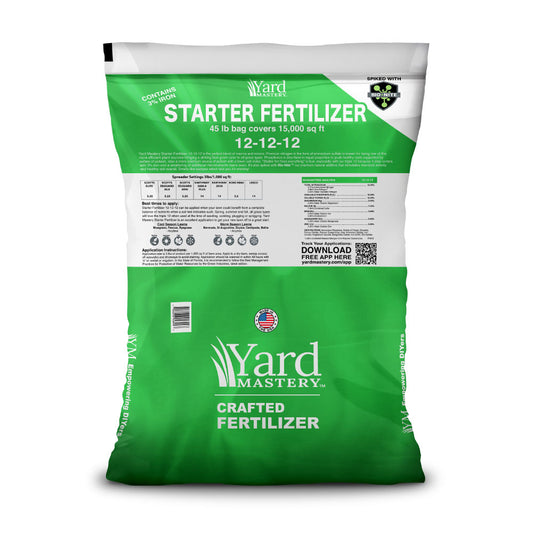Rain Before And After Fertilizing The Lawn - Did My Fertilizer Wash Away After Rain?
We often get questions about rain before and after lawn applications. Here are my thoughts.
First let’s set things in context: Home lawn care doesn’t take place in a controlled environment. It’s not like engineering or physics. It’s variable and unpredictable. That is what adds to the challenge!
The weather always wins.
It’s undefeated.
So when it comes to rain and your lawn applications, it’s up to you to put in the time to do the research (like you are doing right now) and make the best educated decision you can. Use common sense. I trust you here, and so you can trust yourself.
Soil Moisture Is Important
Should you water the lawn before you apply products? First off, read the label, especially with “ides” which are “pesticides.” The “ides” kill things. Herbicides kill plants and insecticides kill bugs. These will all have something on the label about soil moisture.
I did an extensive series on a broad leaf herbicide for warm season lawns (not bahia) called Celsius. On the label it specifically states that soil moisture should be present.

Just logic with me on this. Doesn’t it make sense that having some soil moisture present at the time of your application, any application, would be good? Think of the opposite case. If the soil is bone dry, then the lawn would undoubtedly be stressed and I can’t think of any product that you’d want to put down on a stressed lawn outside of water. If your lawn is stressed from being dry, water is the first remedy.
Back to soil moisture: on the flip side, if adequate soil moisture is present, that is an indicator that the lawn (and everything in it and below it ie: microbes) is likely growing with some vigor. That’s what we want. In the case of the herbicide Celsius, we want the weeds we are targeting to be actively growing. An actively growing weed will absorb/take in the poison we are spraying on and around it. A weed that is under stress from lack of water is going to be closed off just trying to survive, not actively seeking sunlight and therefore vigorous growth.
Hence the term “wilt”
The dictionary definition of “wilt” is:
“to lose turgor from lack of water”
That word turgor pressure is one we explored back in 2019. It’s closely associated with potassium and water. There’s a reason they pack your hydration drinks with potassium. What does the body need when it is dehydrated? Gatorade baby! Remember the advertising about electrolytes? Those are essentially my favorite flavor is original lemon lime) There are much better alternatives these days and some of them REALLY pack in the potassium for those who like to push the limits.
Summary: When it comes to “ides” read the label and look for soil moisture recommendations. And in general, adequate soil moisture is always a good thing.
Watering Your Lawn Before Fertilizer Applications
Some soil moisture should be present when you are applying fertilizers too. When you apply fertilizer, you’re “feeding” the lawn and so it needs to be properly hydrated in order to properly utilize your inputs.
If you are regularly watering your lawn along with getting rain then that means you have good soil moisture. No need to change anything or add anything. Just keep on the schedule you have that is working. If you need to set up a lawn watering plan, here is a video on how to take the tuna can challenge to get started.
Fertilizing a Wet Lawn with Liquid Fertilizers
What if you are fertilizing in the morning and it’s wet with dew? With liquid fertilizers and bio-stimulants, this is great! Spray and pray all day, especially if you are applying with a backpack sprayer, put on your waterproof boots and go spray that wet lawn. This works for Hydretain too. If the lawn is wet at the time of your application even better!
If you are using the WG version of prodiamine and spraying from your backpack, applying to a wet lawn is good here too. Not required, but it’s not a bad idea either.
Then when you’re done, get it watered in right away. Good to go!’
Fertilizing a Wet Lawn with Granular Fertilizer
With granular fertilizers you want to be a little more careful. Applying to a wet lawn, what can happen is some of the prills stick to the grass blades instead of getting down into the turf. Sometimes this can burn that spot. It’s called “tip burn” and it’s not too common, but can happen. I’ve fertilized my St Augustine wet dozens of times and never had an issue. But if you are concerned, then make sure to apply to a dry lawn. You will also find that listed on the label. Now you know why I included it on there.

Prodiamine Pre-Emergent (Granular) and Soil Moisture
If you are applying Prodiamine pre-emergent , the same “rules” apply in that you want some soil moisture present. This is an early spring strategy and so oftentimes you’ll be applying it when the lawn is dormant. This is perfectly fine.
The main consideration with granular prodiamine is you don’t want the soil to be frozen. If you are applying according to my strategies, then your soil temps will be at 50F or above and that means the ground isn’t frozen.
It is important to have soil moisture present so when you go to water it in, it is able to dissolve into the soil. The way prodiamine granular works, the powder is adhered to grains (filler) and when you apply and then water, you are washing the powder off the grains and into the soil. If the soil is very dry, water can just run off and not in. You’ve poured water on super dry soil before - it runs off and carries stuff with it. Having soil moisture present helps penetration, it’s logical.
Note: I realize that prodiamine is also an “ide” (pre-emergent herbicide) but I classify it separately here because of how big of a role it plays in my strategies, I wanted to give it it’s own section.
Watering In - Applying Before Rain
For the “ides” they are all going to be different. It’s important to read the label to find out if your product should be watered in, or if it should sit for a while and for how long. This is important. Take time to read the label, it will make you a better applicator and your results will show it!
With rain, when in doubt, wait it out.
Watering In Fertilizers and BioStimulants
Most of the products we use in my strategies need to be watered in between ¼” and ½”. All of the Yard Mastery fertilizers are ¼” and prodiamine granular and WG are ½”.
The reason we want them watered in is to get them into the soil where they can work. Fertilizers get there so microbes can break them down for the plants to take in. Prodiamine gets down there so it can form a vapor barrier in the top profile of the soil to prevent crabgrass from breaking through.
It’s important to water these in.
For fertilizers we tell you to get them in within 48hrs. This is because the longer it sits there without being watered in, the longer it’s going to take you to see results. There is also a greater chance of a gully-washer rainstorm coming through that could push some of your fert out into the street. So get it watered in.
However, if you can’t get it watered in, it’s fine. It’s just going to sit there waiting for water. It can sit there for a week and have no issues. Probably some of the elements will begin breaking down just from morning dew depending on the time of year. But you won’t see results.
So get it watered in. If you go over the recommended 1/4”, that’s fine too. You just don't want the ground saturated to where water is running off. Your soil will dictate how much water that is but generally speaking if you water more than ½” that’s ok but no need to over-do it either.
Watering In Granular Prodiamine and WDG Prodiamine
For prodiamine granular and WG, that one is a little more important on the watering. That is an “ide” and the sun can degrade it over time. I don’t know what study was done to show this so I can’t quote it but I know when I worked for TruGreen in the 2000s this is what we were taught.

Of course, it’s also important to get it watered in so it can go to work. This is a timed application because you have to be ahead of the crabgrass. If it’s applied on time but sits for 2 weeks then it becomes lost time you can’t get back regardless of if they sun comes out or not.
You see how some of this really comes down to logic?
Applying Lawn Fertilizer Before Rain
It’s great if you can time out an application and let nature give you free water to get it into the soil. When I worked for TruGreen South of Chicago in the 2000s, we had thousands of customers who did not water their lawns. No joke, thousands. In spring, which is the rainy season in the midwest, those lawns were all green and looking awesome. Our fertilizer applications all got watered in by natural rain.
For the homeowner who doesn’t have an in ground sprinkler system, rain can save you a lot of time and money.
This is where it’s important for you to do the best research you can to make a decision on rain. The weather man can be a great help but he isn’t going to be perfect.
It also depends on where you live and the time of year. Back to my time spent in Illinois and NW Indiana, our spring rains were steady and light for hours, sometimes all day. But there was no puddling or flooding. These were what I called “good rains.”
These are not pounding rains or storms. It’s just light rain for hours and it really wakes everything up! Not just lawns but tulips, crabapples, redbuds, magnolia and so many more! April showers bring May flowers. You’ve heard it. These are good rains!
On the other end of the spectrum, here in Florida, our rainy season is summer. If you come to visit here in summer and you look at the weather forecast, it will show a 60% chance of rain everyday.
These are different rains though. They are spotty and quick, hammering an inch of rain in 20 minutes. Clouds build over the Gulf of Mexico in the morning and move across the state all day raining hard over small spots. There are rarely full rainouts here. Most just popup storms. Ask anyone who lives here they will tell you that at least once a year there is a time when they are mowing, and it will be raining in the backyard while they are mowing the front. It’s quite common!
The thing about these storms is they will wash granular fertilizer right out of your lawn and into the storm drains that lead into the Gulf. This is why we have summer Blackouts on nitrogen and phosphorus fertilizers. Our rains are so harsh that laws have been made saying we can’t fertilize due to the rain! I do a lot of education on these laws during the summer and show you blackout friendly products that work to keep the lawn green so be sure to subscribe.
Bottom line: if you’ve done the research and it looks like a “good rain” is coming, go ahead and apply. If heavy thunderstorms are in the forecast, best to wait.
When in doubt, wait it out.
This is the advantage of being a DIYer. You only have one lawn to manage.
What If It Rains VERY HEAVY After I Have Applied Lawn Fertilizer?
Think about it in the context of the professional spray companies in your neighborhood. They are out on days when they do applications in the morning and it storms hard in the afternoon. Happens all the time. Their customers go through those “very heavy” rains too. Do they still get good results? They sure do!
They also use the same prodiamine pre-emergent that you and me do. Sometimes they use liquid, sometimes they use granular. They get great results when hard rains that are unpredicted hammer down “very heavy.”
What I’m getting at here is that I can’t tell you if the rains you got did anything to hinder your application. There are just too many variables in soil types, slope, grass thickness, grass type, time of year, etc.
My advice here is to control your controllables, stick to the plan, hope for the best. Do not re-apply product after a “heavy rain.”
Likely, your product is fine. Remember those professional lawn spray companies? Their customers got the same heavy rain.
If some of the application is washed away and results are lackluster, then that is a case where the weather beat you on that one and you should seek to be more strict around rain on your next app. Or water in the application on your own BEFORE the rain comes.
Above all, let’s hope for the best.
That is really all we can do. You’ll win some and you’ll lose some but don’t re-apply.
This is also a good place to keep notes in your Yard Mastery Lawn Journal App so you will be able to pinpoint if you dont get the results from a certain application that you expected. It’s then that you will know if the rain was too much or not and again, I encourage you to use this experience to make a better decision going forward.
Just like an old sailor, over time, you’ll learn the weather in your area and how it changes through the days and seasons and you’ll get better and better at predicting it and you’l’ be making smart applications around it.
At the end of the day, I know you are intelligent and I trust you to make the right decision. Now go Thrower Down!
I’ll see you in the lawn!
AL


